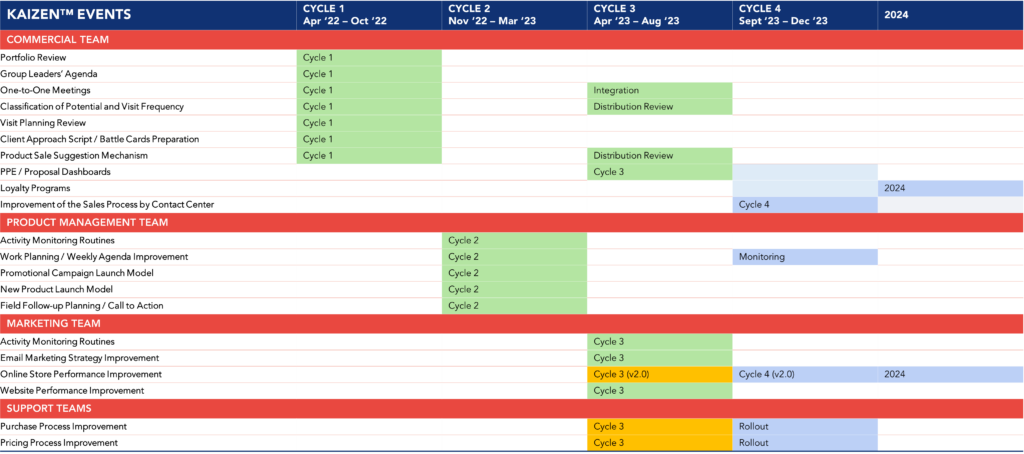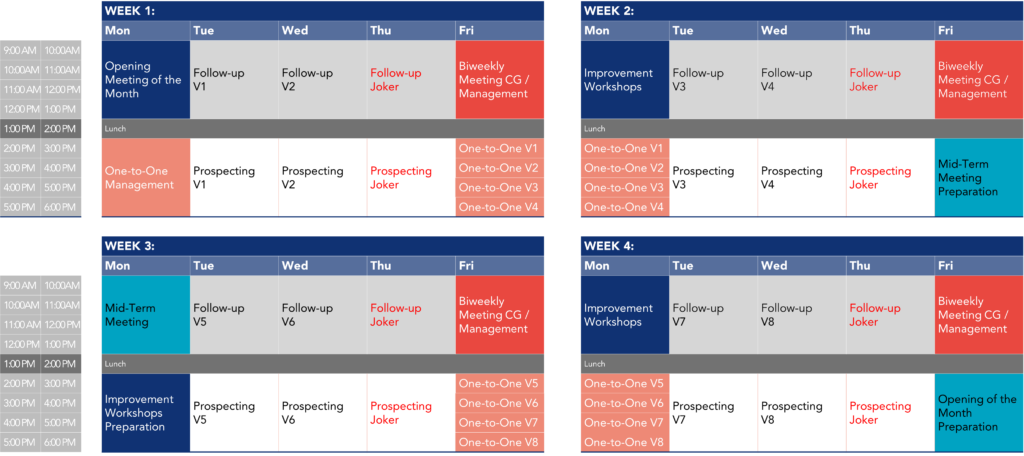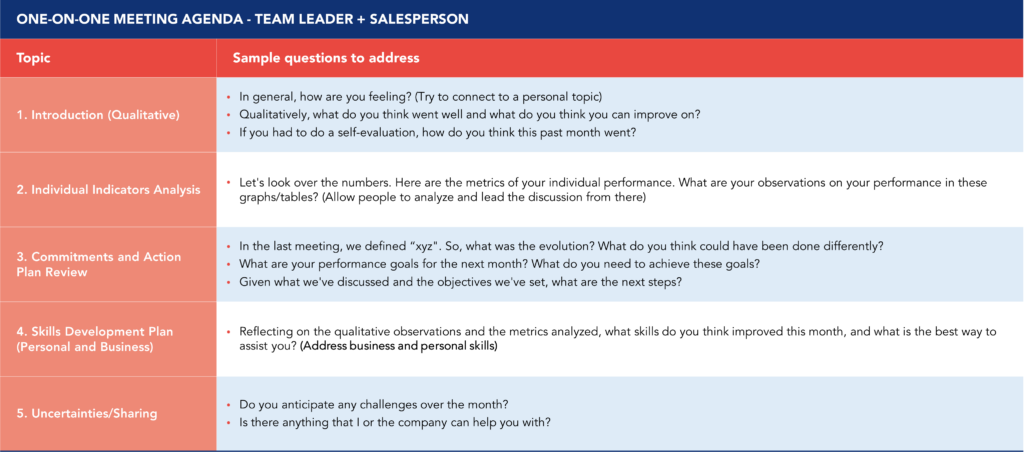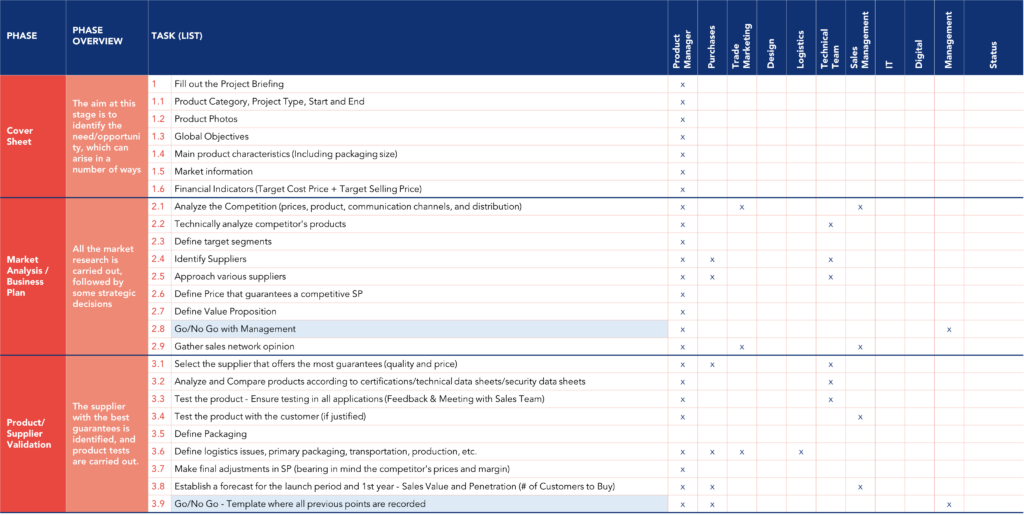Company Introduction
Since its establishment in the 1980s, this company has played a significant role in the Portuguese industrial landscape. The company has evolved and diversified its operations, starting as a fixing system manufacturer. Today, it stands out as a European reference, offering various industries a wide range of products and services.
The company’s ongoing quest for innovation has led to the expansion of its portfolio to include fixation products, along with other items like power tools and personal protective equipment. It has built a solid reputation as a leader in its sector, distinguished not only by the quality of its products but also by its proactive approach to anticipating and meeting the ever-evolving market needs.
This article explores a project carried out by the company in partnership with the Kaizen Institute, aimed at improving commercial operations, marketing, and product management. This project marks a significant milestone in the ongoing quest for excellence, underscoring the company’s commitment to staying at the forefront of the industry.
The Challenge
Although the company experienced sales growth over the years, the need for improvement became evident, especially in Sales, Marketing, and Product Management teams. Recognizing the need for change demonstrates the company’s constant commitment to keeping its operations in sync with market trends. Optimizing internal processes and strengthening the organization in the mentioned strategic areas was necessary to continue thriving and meeting the growing customer expectations.
The Solution
The approach to addressing the challenge at hand was divided into two phases: a Strategy Improvement Planning phase and, later, a Vision Implementation Project. Each stage was crucial in efficiently transforming the Sales, Marketing, and Product Management operations.
Strategy Improvement Planning Phase
During this initial phase, which lasted about a month, a comprehensive analysis was conducted to establish a solid foundation for future improvements. This involved evaluating the value chain and key customers, examining how well the main product categories fit the market, exploring strategic categories, and analyzing the competition using value curves. Additionally, issues such as organization, routines, and leadership processes of the teams were examined. The time allocation per task in the sales team and the processes of lead acquisition, conversion, and customer loyalty methods were also analyzed.
For all these processes, opportunities for improvement were identified, and new solutions were proposed.
A timeline was established at the end of this strategic planning phase, outlining the improvement initiatives to be carried out in the following phase.

Vision Implementation Phase
The implementation stage focused on several initiatives to optimize operations and strengthen the teams’ capabilities. Some of these activities included:
- Review and Leveling of Sales Portfolios: One of the first initiatives was the review of sales portfolios. The goal was to ensure the correct classification of clients by sector for a more effective approach. In addition, portfolios were leveled based on potential and effort required, aiming to optimize sales team performance.
- Customer Potential Definition: A set of criteria for defining each customer’s purchasing potential was established, accompanied by regular routines for its update. This provided a more precise and updated view of the growth potential of each customer, facilitating strategic decision-making.
- Differentiated Sales Approach: The process involved defining a differentiated sales approach, considering the customer’s purchasing potential and visit sensitivity. The approach described who the contact point was with the customer – key account managers, salespeople, and call center – and the frequency of contact or visit.
- Standardized Agenda for Sales Team Leaders: A standard agenda was defined for sales team leaders to ensure focus on higher value-added activities. This agenda included activities like team and individual meetings, accompanying salespeople, prospecting activities for high-potential customers, and other critical activities for sales operations success.

- Standard Meetings and Leaders Development: Team and individual meetings were standardized to ensure efficiency and proper preparation. Indicators were defined to monitor and provide visibility on possible deviations, and action plans, including countermeasures to address variations, were elaborated. Additionally, there was a particular focus on improving the leaders’ capabilities, training them not only to develop and effectively guide their teams but also to address problems in a structured manner.

- Sales Process Improvement: A systematic approach was adopted to standardize best practices in organizing the visit plan and sales approach, aiming to optimize sales processes and ensure consistency in operations. Considering their profile, standard sales and product list recommendations for each customer were defined.
- Email Marketing Improvement and Website Optimization: Email marketing underwent substantial improvements, including content optimization, segmentation, and planning standardization. At the same time, the website and digital store were optimized to achieve higher organic positions in search engines, increasing the company’s online visibility.
- Optimized Product Management Processes: Product management activities were improved by standardizing product managers’ agendas and optimizing promotional campaign management and new product launch processes. These changes contributed to more efficient and agile product portfolio management.

Working together with consultants from the Kaizen Institute, the company’s teams carried out these and other improvement activities over approximately 20 months
Results
The initiatives implemented during the project provided the company with remarkable growth. From 2021 to 2022, the company registered a sales increase of 9%. This growth was consolidated in 2023, with a further 10% growth in comparison to 2022.
These results validate the effectiveness of the measures adopted during the project and demonstrate the company’s ability to adapt and thrive in a dynamic business environment.
See more on Marketing & Sales
Find out more about improving this business area
